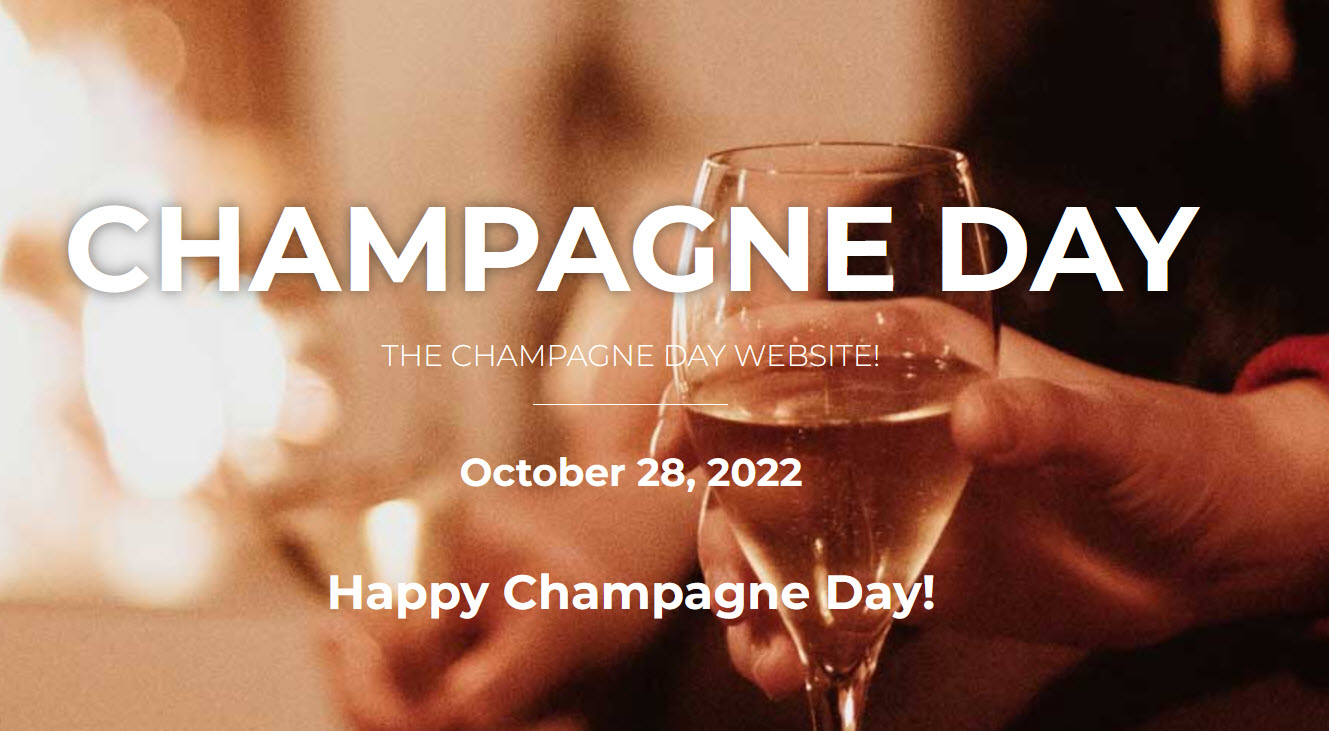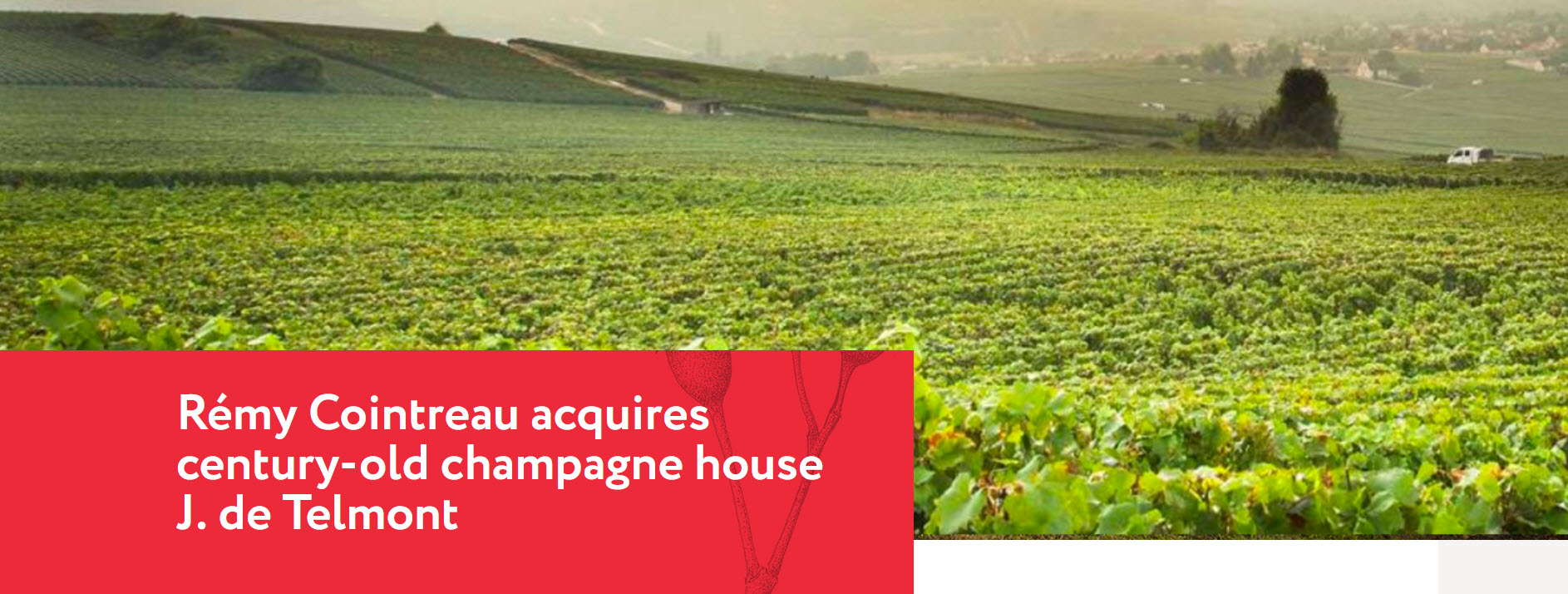CHAMPAGNE BULLETIN OCTOBER 2022
In case you missed it, October 28th was Champagne Day.
 In case you’ve never heard of Champagne Day, it started over a decade ago, as an online only event for champagne lovers who wanted to share their enthusiasm with like-minded people around the world. That’s still the central theme to the event, but now it has given rise to loads of spin-off events both on and off-line, to celebrate and share champagne and to get people talking about champagne
In case you’ve never heard of Champagne Day, it started over a decade ago, as an online only event for champagne lovers who wanted to share their enthusiasm with like-minded people around the world. That’s still the central theme to the event, but now it has given rise to loads of spin-off events both on and off-line, to celebrate and share champagne and to get people talking about champagne
Other than Champagne Day it’s been a fairly quiet month in Champagne with one of the main talking points being the sharp increase in costs faced by most champagne makers and other actors in the champagne supply chain. The most significant impact comes from the cost of energy, but this is not something unique to Champagne.
Meanwhile, consumer demand continues to be strong from around the world and the low levels of stocks has lead some producers to put their customers on allocation, meaning that the amount they can order is limited. It’s a situation that is likely to persist into next year and beyond until reserves and stocks have been built back to more healthy levels.
“The first hundred years are the hardest”
So runs the old adage amongst champagne houses.
 This short phrase may strike you as a bit flippant, but there is a lot of wisdom contained in these few words and they underline the fact that in the champagne business, patience is not just a virtue, it’s an essential.
This short phrase may strike you as a bit flippant, but there is a lot of wisdom contained in these few words and they underline the fact that in the champagne business, patience is not just a virtue, it’s an essential.
Once the product itself is ready, the first step is to build and secure your distribution base so that you are achieving satisfactory sales volumes and, crucially, repeat orders from regular customers.
Famous actors, musicians and celebrities have a distinct advantage in this regard because one word on social media from them to their fans can sometimes produce an avalanche of sales. Unless you already have a similarly large and active network of followers it could well take you a couple of years to get to this stage, but growing your customer base is time well spent.
Know your customers
At any stage of brand building, sales forecasting is extremely important not least because of the need to forecast the orders you place with your champagne supplier. These order forecasts need to be as accurate as possible and need to be shared with the champagne maker as early as possible because of the extended lead times involved in the production of champagne.
Getting the sales and order forecasts right is not always easy, especially in the early stages soon after the brand launch. This is why it is so important to research your target market in as much detail as possible.
The big distribution companies have large sales forces and each person in the sales team will have his or her own customer list. The salespeople can give a fairly accurate estimate of the orders that each bar, restaurant, hotel or wine shop is likely to place in the weeks and months ahead and these estimates are aggregated and used to compile the order forecasts sent to the champagne maker.
Online sales are more difficult to estimate but there are several software packages available to help with this task and to maximise sales and customer satisfaction, Enolytics being one worth looking at.

“Start with the end in mind”
Here’s another well-known saying, this one coined, I believe, by Stephen Covey in his book ‘The 7 Habits of Highly Effective People’
So, the questions that anyone contemplating starting a private champagne brand should ask themselves are ‘Why am I doing this? What is the objective?’.
One objective that is likely to be on many people’s radar is to sell the brand to a larger company and make a handsome profit. Whilst this isn’t easy, it’s certainly not impossible as the recent flurry of acquisitions in the wine and spirit business demonstrates.
Campari, Diageo and Pernod Ricard have all been on the acquisition trail recently although this activity has mainly concerned drinks other than champagne. However, in the past year or two, Remy Cointreau has purchased Champagne J de Telmont, Campari has purchased a majority stake in Champagne Lallier and LVMH has taken a large share in Ace of Spades (Armand de Brignac) with each of these transactions certainly being worth several million euros.

Of course, getting to the position in which you attract the attention of a large industry player is going to take time, probably a long time, but with a strong vision, plenty of effort and sustained investment, it may not take as long as 100 years.
End of year sales
You probably won’t be surprised to learn that sales of champagne are disproportionately skewed towards the end of the year and to the Christmas and New celebrations with fully 60% of annual sales taking place in the last third of the year.
Apart from being an interesting piece of information, there are a number of implications that are relevant to any brand coming new to the market. To give just two examples:
- If you want to take advantage of sales opportunities at the end of the year, it’s crucial to ensure that your brand is available well before October.
- If you are pitching to a distributor, you will need to do this in the first few months of each year because this is when distributors are finalising their product portfolio for the end of the year
These things and more take many months to put in place which sort of brings us back to the quotation at the start of this bulletin. The moral of the story is that however much time you think your project will take, it makes sense to build a few extra months into your planning and/or to start a few months earlier than you would do otherwise.
If you’d like to discuss this or any other aspects of creating your own champagne brand, please send me an email at This email address is being protected from spambots. You need JavaScript enabled to view it.
Until next month, all the best
